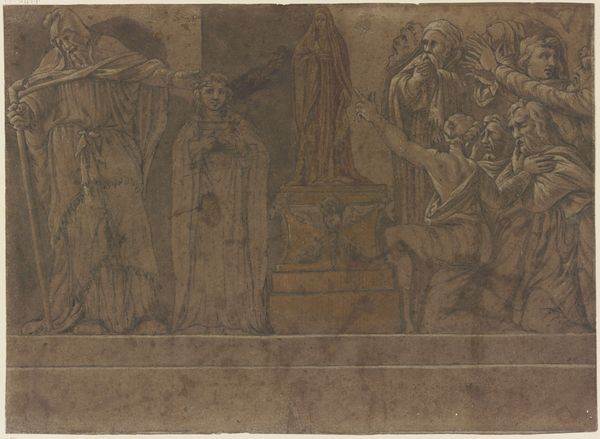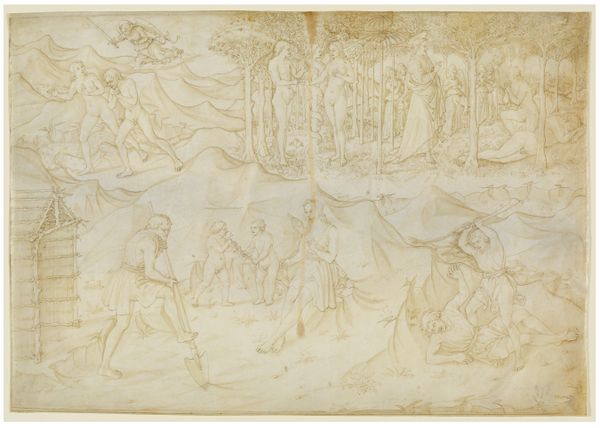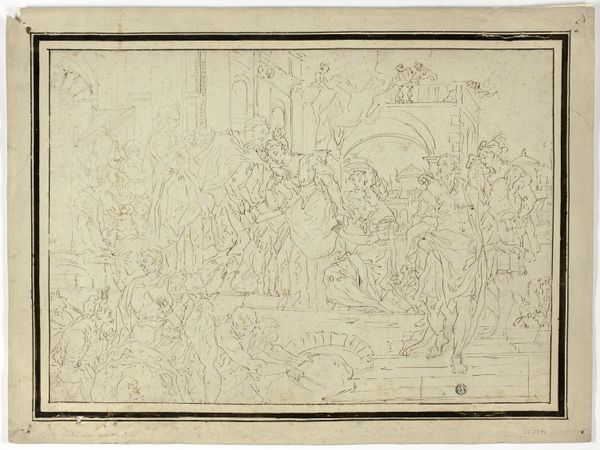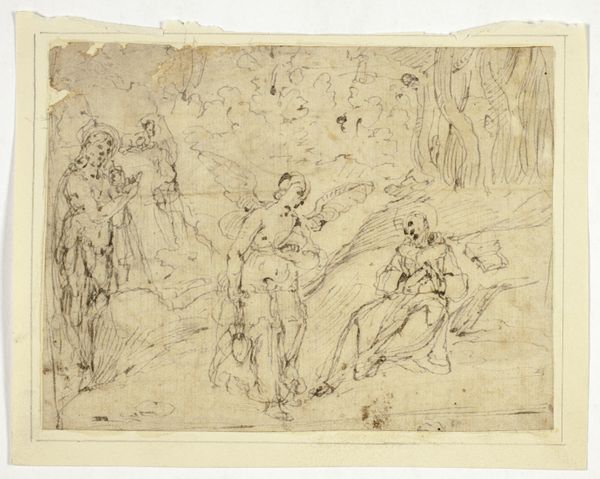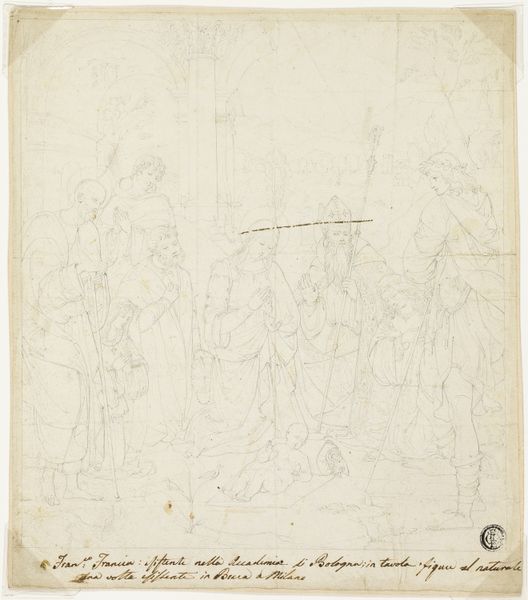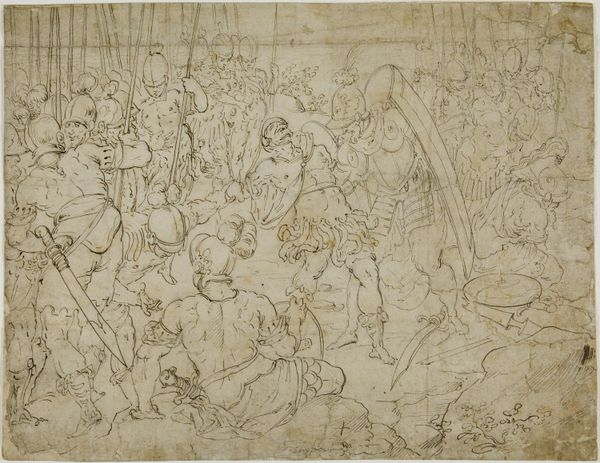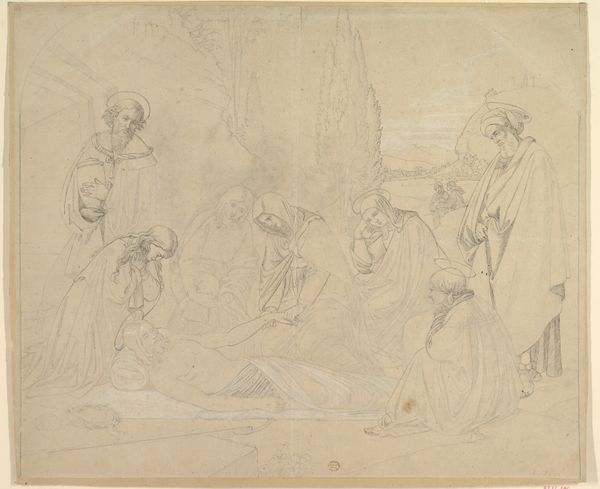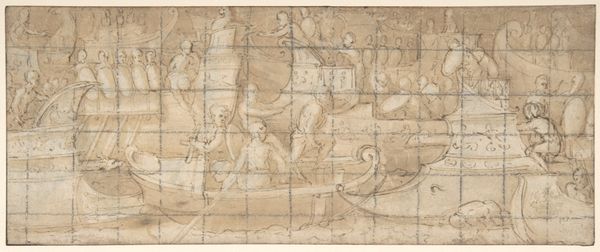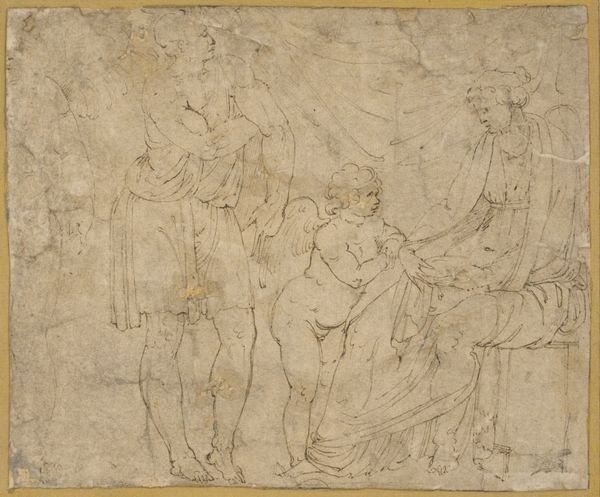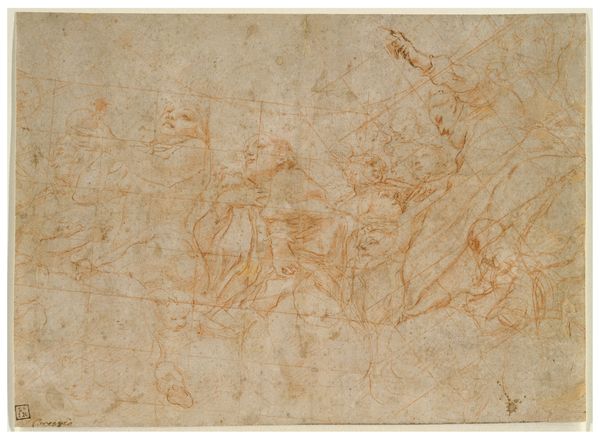
Copyright: Public Domain
Julius Schnorr von Carolsfeld made this drawing of David repenting, using graphite on paper. The texture of the paper itself is crucial here. Its rough surface grabs the graphite, creating a range of tonal values with each stroke. Look closely, and you can see the weave of the paper, almost like a textile. Drawing is often seen as a preliminary step in the creation of an artwork. But in the nineteenth century, with the rise of industrial printmaking, drawings became increasingly valued in their own right. This particular drawing is a fragment, and we don't know its original purpose. But it resonates with the period's growing interest in the handmade, in an age of mechanical reproduction. The artist's hand is evident in every line, a direct connection to the act of creation. This tactile quality of drawing invites us to consider the labor and skill involved, elevating the status of the draughtsman. In its seeming incompleteness, this drawing becomes a potent symbol of artistic process.
Comments
No comments
Be the first to comment and join the conversation on the ultimate creative platform.
